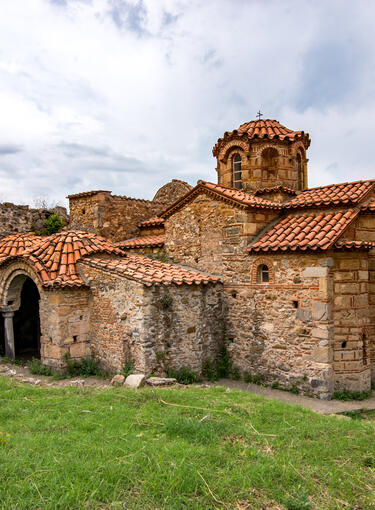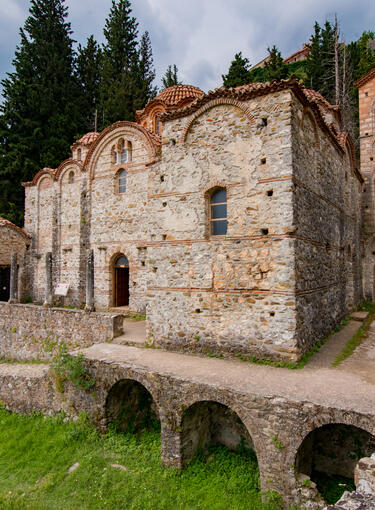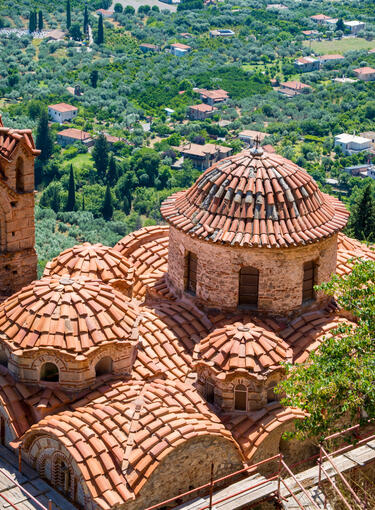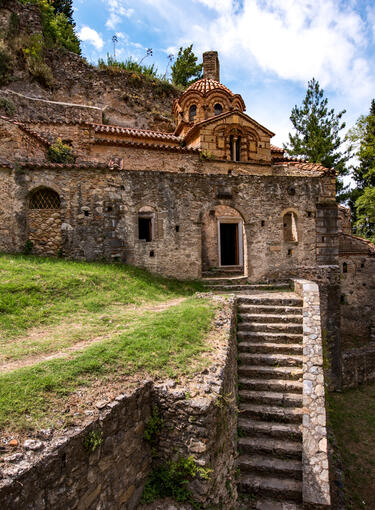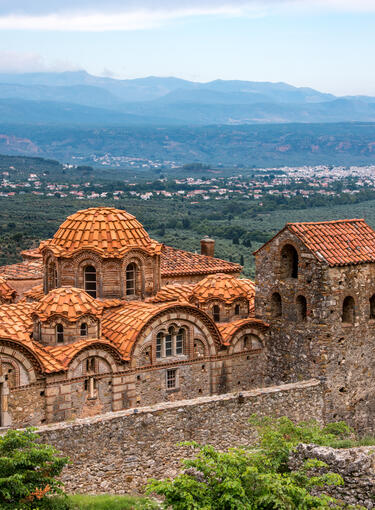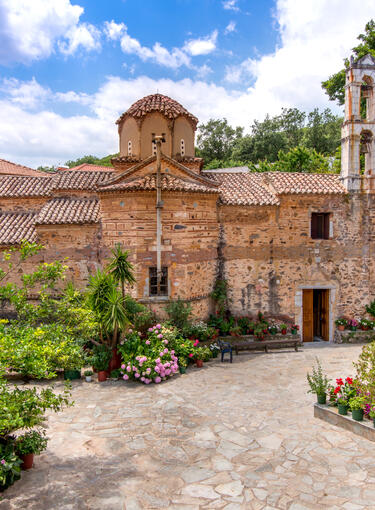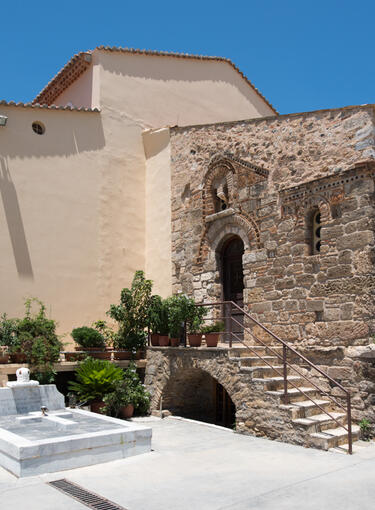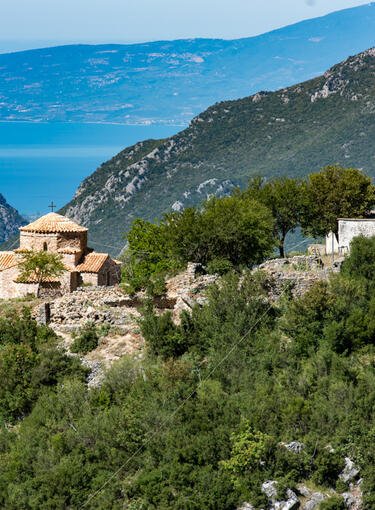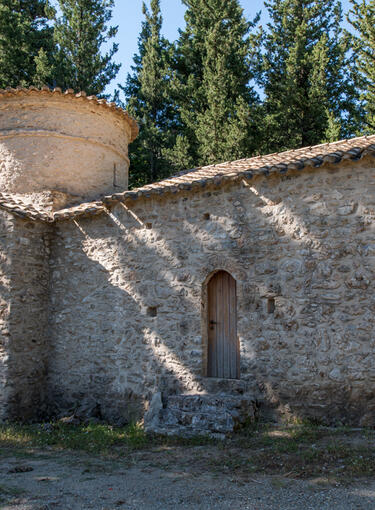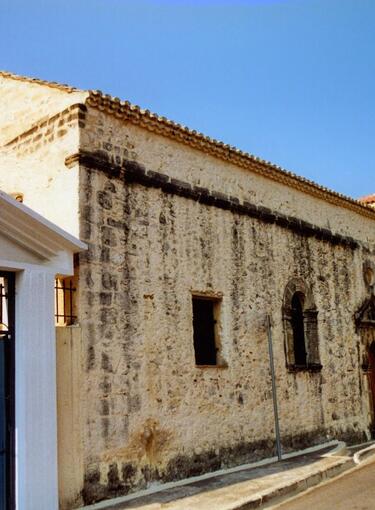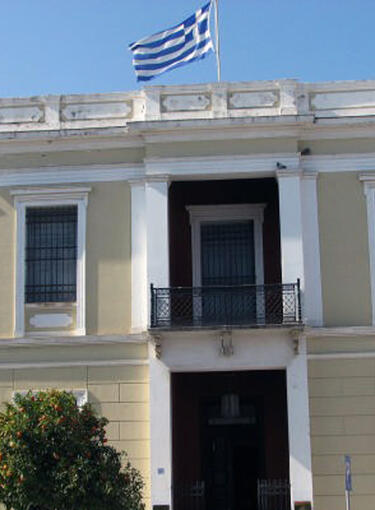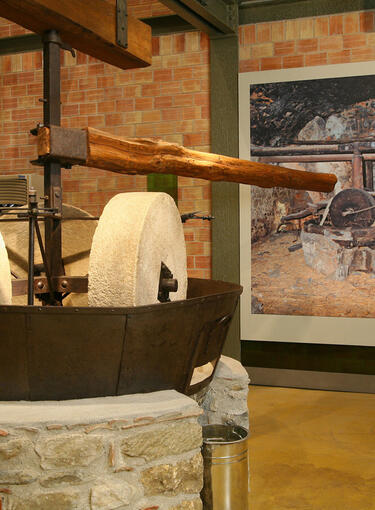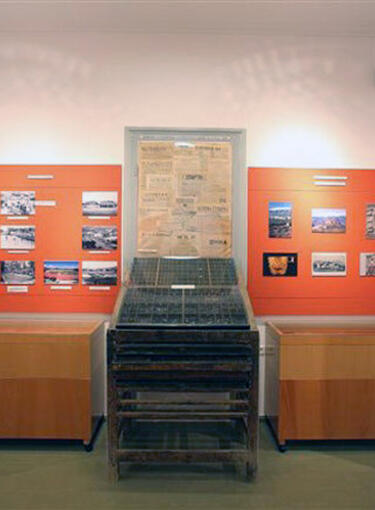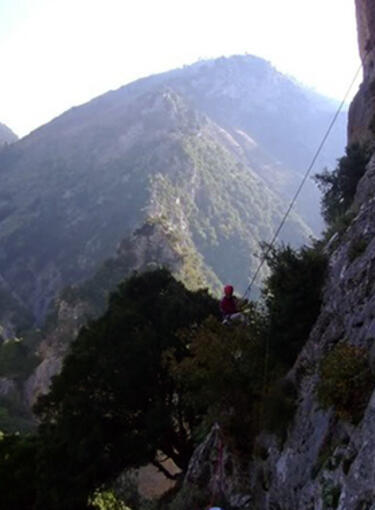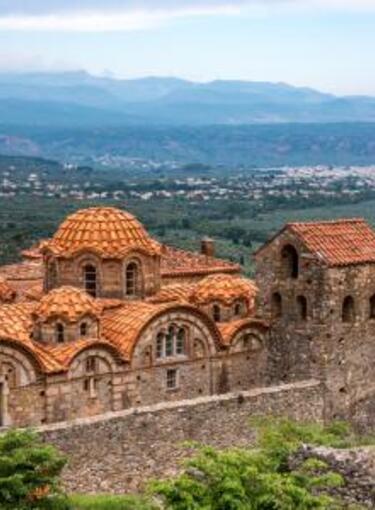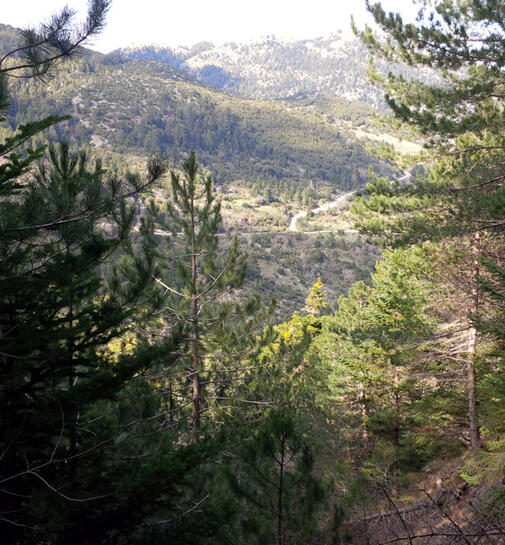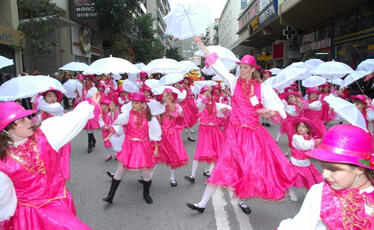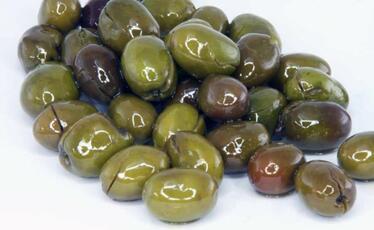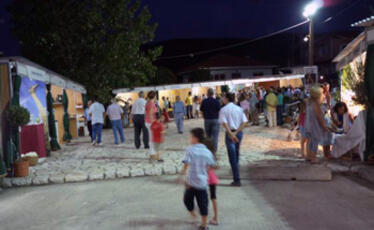Holy Monasteries
At the enchanting landscape with the pine and fir trees, on the western slopes of mount Taygetus and over the village of Elaiochori or Giannitsa, is the monastery of the Dormition of the Virgin Mary. It is known as the monastery of Dimiova, a name that comes from a Slavic word meaning “place where the crocus plant grew”, since indeed the crocus plant appears every spring in the nearby forest.
The monastery existed at least from the 15th century, since we know that its cells were torched by the Turks in 1463, during the Venetian-Turkish war. Its present form dates from the beginning of the 17th century, even though it was destroyed and renovated a lot of times through the centuries, like in 1770 during the Orlov Revolt. The monastery was a stauropegic one, with remarkable property, and during the revolution of 1821 it was a place where fighters used to meet. It was dissolved in 1834 after an edict by Otto and in 1837 it was renovated and re-opened after protests by the people of the area. Until 1944 it was a men’s monastery and it changed into a women’s monastery in 1960, and it was renovated in 1968-1969.
The complex has four sides and looks like a fortress, since it is surrounded by tall buildings of cells and auxiliary areas, among them what is interesting is the fotanamma and the refectory. Remarkable is the tower of “Riga”, on the southwest, outside the precinct. The catholicon is an almost square cross-in-square church without a narthex, with a dome supported on two columns. Its interior is richly decorated with icons made by the priest-monk Damaskinos in 1663, according to an inscription that survives over the entrance. The wooden-carved screen was made by Andreas Koronaios in 1773. A rare treasure of the monastery is the icon of Panagia Elaiousa, which dates from the 16th or the beginning of the 17th century.
The church celebrates on the 15th of August, while on the 3rd of September there is a procession of the icon to the church of the Birth of Virgin Mary Giannitsanikon.
Informations
Additional
Date:
beginning of the 17th century
Season:
Post-Byzantine
Celebrates:
15 August, 3 September
Holy Metropolis:
Messinia
Under the Supervision of:
Ephorate of Antiquities of Messinia
Address:
Elaiochori









